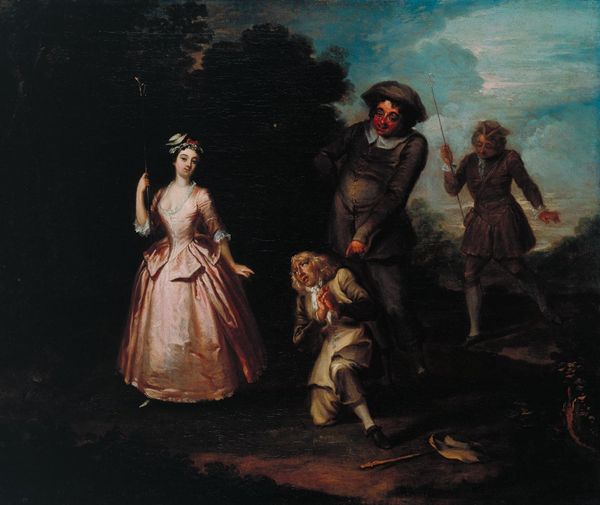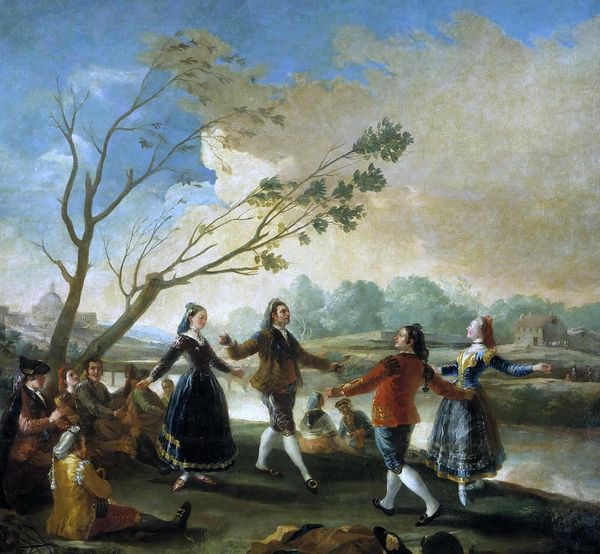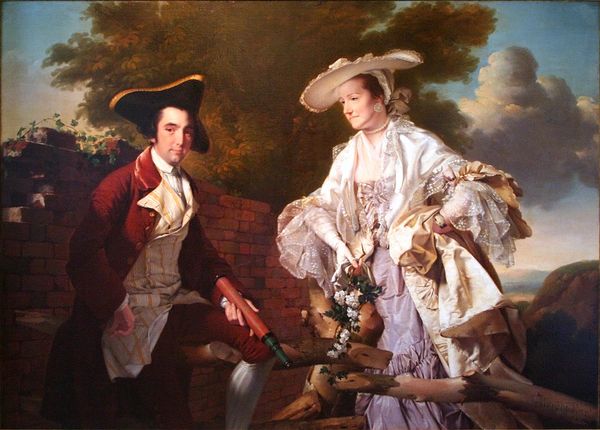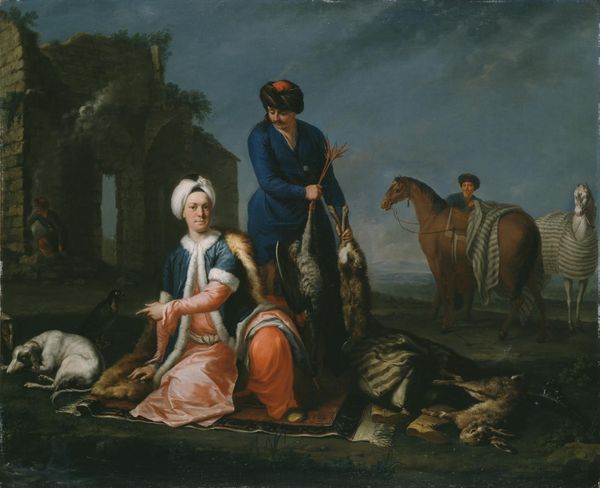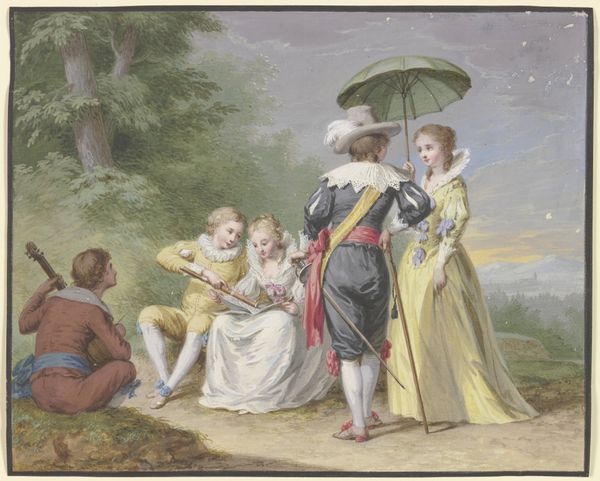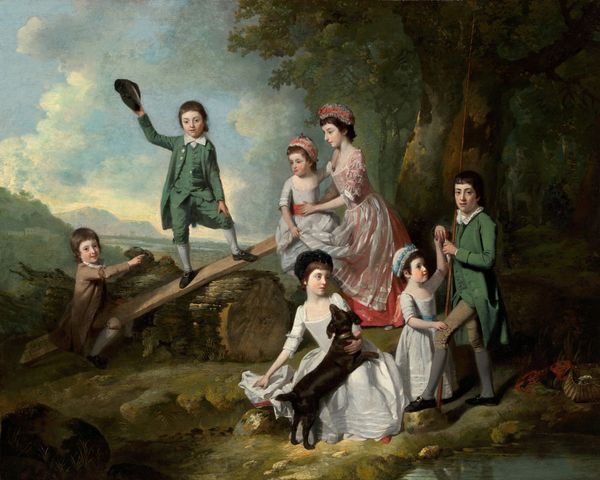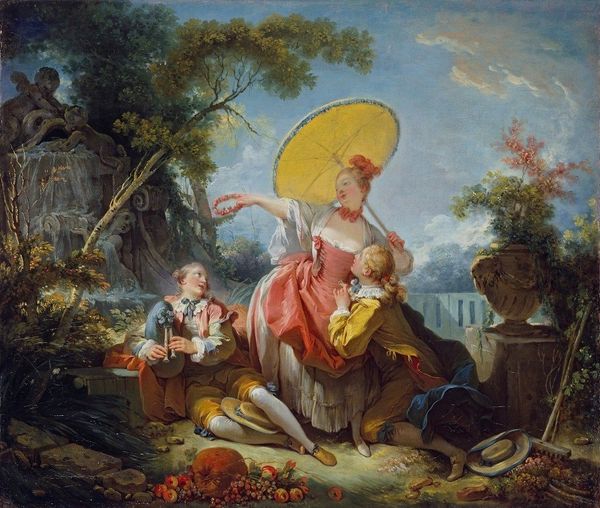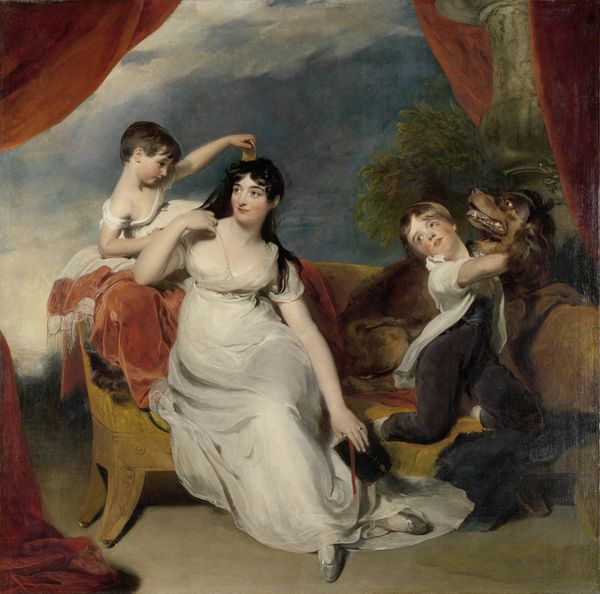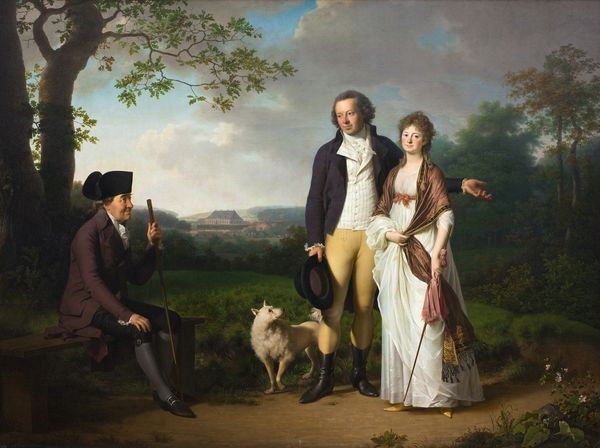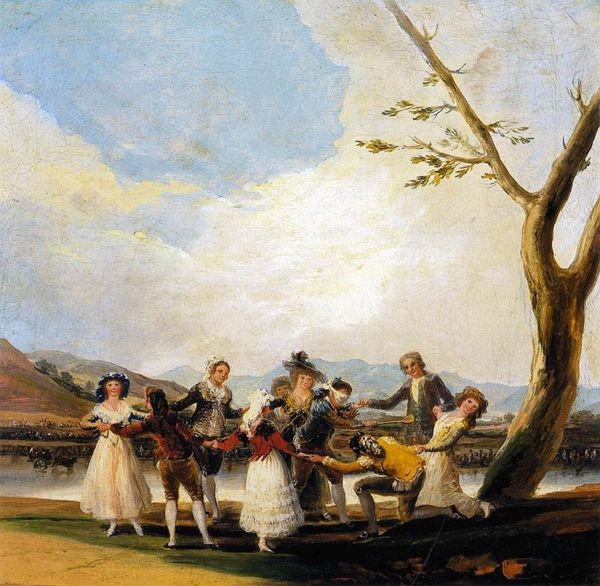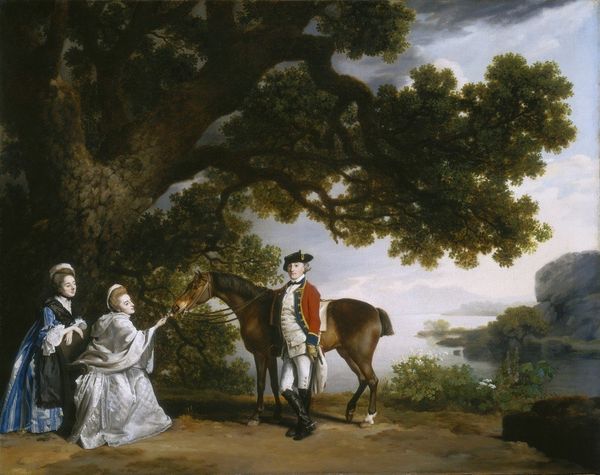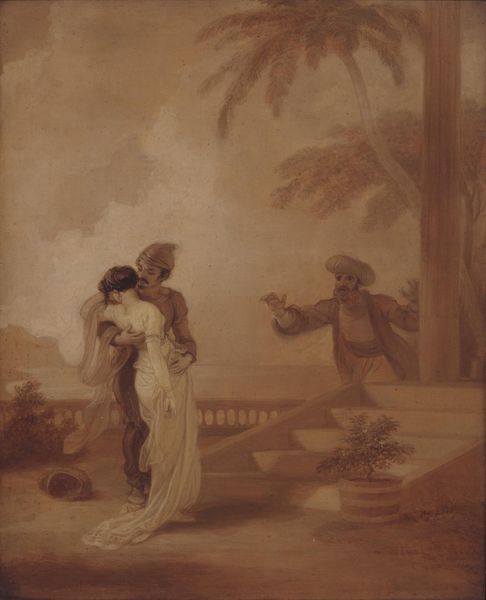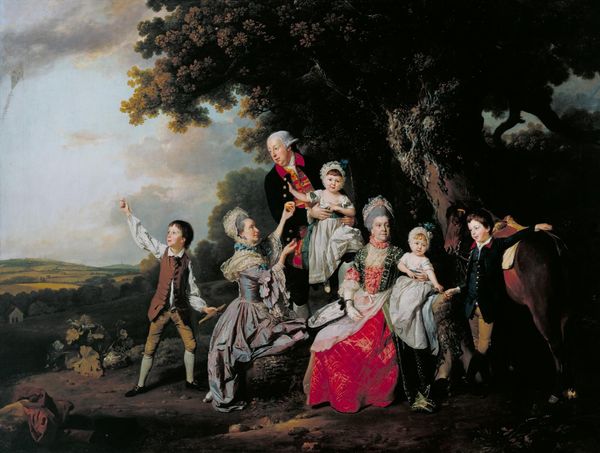
Dimensions: 104 x 152 cm
Copyright: Public domain
Curator: Here we have Francisco Goya’s “The Parasol,” painted around 1777. It is an oil on canvas, now housed at the Museo del Prado. It's a vibrant piece for a tapestry cartoon. What catches your eye first? Art Historian: The striking contrasts! The woman, so deliberately posed, is sharply set against the playful bend of the sapling and her companion in the background. A definite Rococo sensibility meets something else. Curator: Yes, Goya was employed by the Royal Tapestry Factory at this time, and these works, depicting scenes of everyday life, were meant to be woven into tapestries for the royal residences. This, on the surface, depicts a pleasant, flirtatious encounter, reflecting aristocratic tastes. Yet there's a social tension hinted at beneath the veneer. Art Historian: Absolutely. The parasol itself is loaded. Beyond its obvious function, it's a shield, a symbol of status, demarcating her as separate from the natural world, while that young man struggles against a blustery wind in order to simply be included in her space. Curator: Precisely! Consider their positioning, how Goya places the woman, literally above ground while elevating her above the lower classes she purportedly observes from her station; these details point toward evolving social tensions preceding the revolutionary fervor brewing across Europe at the time. The Rococo themes are increasingly complicated by class distinctions. Art Historian: It’s fascinating how Goya utilizes established visual tropes. The woman’s fan and dress all point towards the familiar language of courtship and social rituals, but then there is a black dog sitting in her lap! Usually in art, a dog indicates loyalty and domesticity. Curator: But, perhaps here, the "dog" suggests an entirely different dynamic! I find it difficult to ascribe to such assumptions that are rooted within patriarchal interpretation of an artwork when there are certainly alternate readings, such as the role of the ruling class as society's "lapdog"! What might seem superficially to be genre painting offers powerful commentary on Spanish society at the close of the 18th century. Art Historian: Even that stark contrast – between the carefully rendered foreground and the looser, almost gestural landscape background… it emphasizes this feeling of an artificial construct attempting to control the unpredictable force of the outside world. I had never noticed such interesting symbols lying just under the painting's surface before! Curator: Indeed, it invites such contemplation about class and power, themes that would become more overt in Goya's later, more politically charged works. He evolved so much as a commentator during this time. Art Historian: Looking again at the scene, it does now offer an additional layer of meaning I was too distracted to appreciate initially. The image will stay with me.
Comments
No comments
Be the first to comment and join the conversation on the ultimate creative platform.

